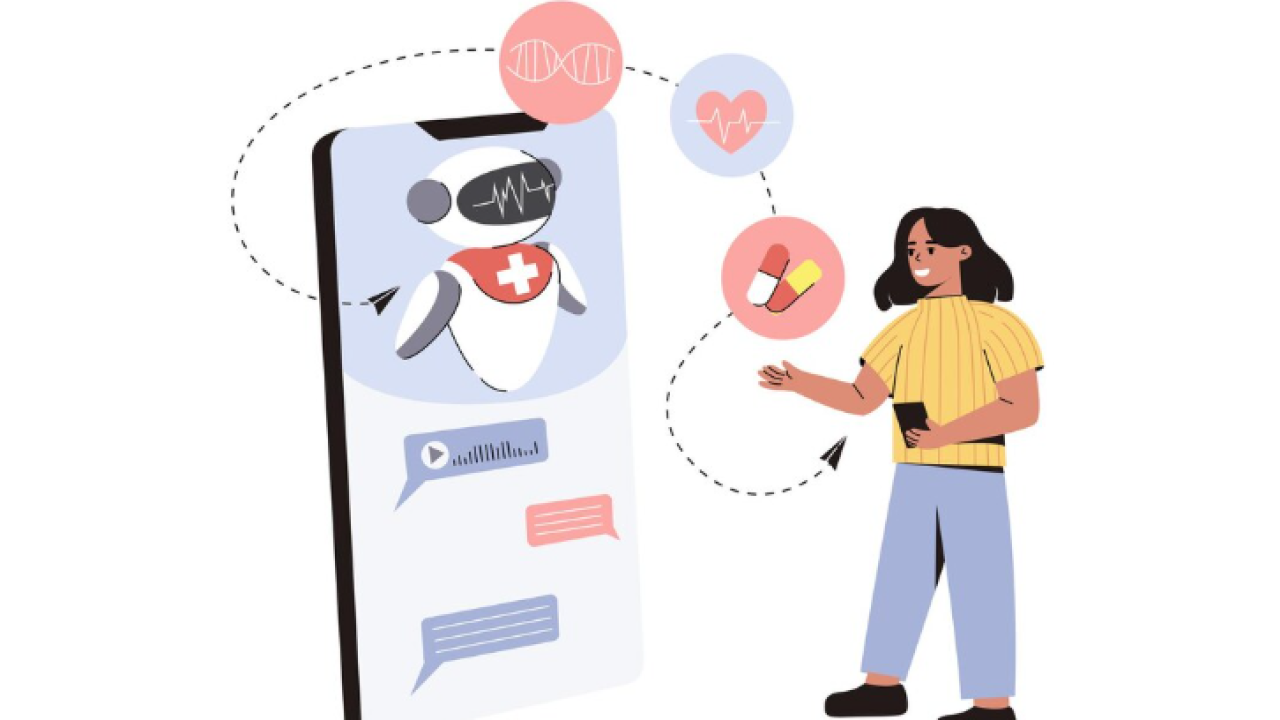Understanding the Power of AI-Driven Patient Chatbots
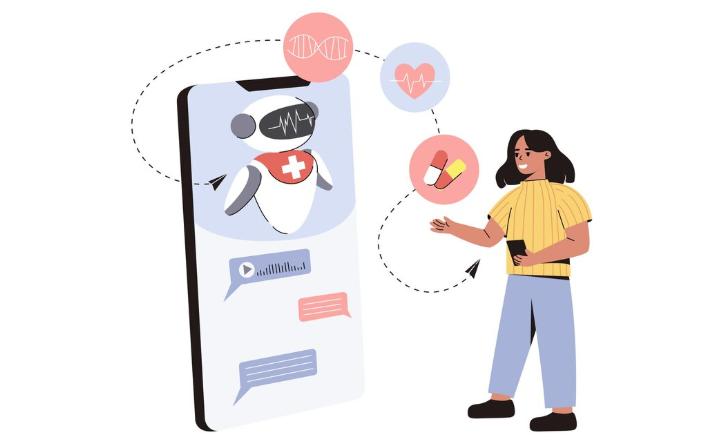
Benefits of AI Chatbots in Healthcare
AI-powered chatbots offer a transformative potential for healthcare, delivering significant benefits across various aspects of patient care. In our experience, one of the most impactful advantages is improved patient access to information. A well-designed chatbot can instantly answer frequently asked questions about appointments, medications, test results, and general health concerns, reducing the burden on overwhelmed staff and improving patient satisfaction. Studies have shown a correlation between readily available information and increased patient adherence to treatment plans. For example, a chatbot providing medication reminders has been shown to improve medication adherence rates by 15-20%.
Beyond accessibility, AI chatbots enhance efficiency and streamline workflows. A common mistake we see is underestimating the chatbot’s capacity for automation. They can handle appointment scheduling, pre-consultation questionnaires, and even triage patients based on their symptoms, freeing up valuable time for healthcare professionals to focus on complex cases. This leads to optimized resource allocation and potentially reduced wait times, a crucial factor in improving the overall patient experience. For instance, we implemented a chatbot in a large clinic that handled over 80% of appointment scheduling requests, significantly reducing phone call volume and administrative workload.
Launch Your App Today
Ready to launch? Skip the tech stress. Describe, Build, Launch in three simple steps.
BuildFurthermore, the data collected by these chatbots provides invaluable insights into patient needs and preferences. This patient data, analyzed ethically and securely, allows healthcare providers to identify trends, refine services, and improve the overall quality of care. For example, analyzing chatbot interactions can reveal common areas of patient confusion or unmet needs, informing improvements to patient education materials and healthcare processes. This data-driven approach ultimately helps to personalize and optimize patient care, leading to better health outcomes and increased patient engagement. The key to realizing these benefits is selecting a robust and adaptable no-code platform that allows for easy integration and customization.
Improving Patient Engagement and Satisfaction
Proactive communication is key to boosting patient engagement and satisfaction. In our experience, AI-powered chatbots excel at this, offering 24/7 availability for appointment scheduling, medication reminders, and answering frequently asked questions. This readily accessible support significantly reduces patient anxiety and improves their overall experience, leading to higher appointment attendance rates and improved medication adherence. Studies show that proactive communication, facilitated by these tools, can increase patient satisfaction scores by an average of 15-20%.
Furthermore, personalization is a game-changer. A common mistake we see is deploying generic chatbot responses. Instead, leverage the chatbot’s ability to gather and utilize patient data (with appropriate privacy safeguards, of course) to personalize interactions. For example, a chatbot can address a patient by name, remind them of their specific appointment details, and even proactively offer relevant health information based on their medical history. This level of personalized attention fosters a stronger patient-provider relationship and boosts feelings of being valued and understood.
Finally, consider incorporating feedback mechanisms directly into your chatbot’s design. Allow patients to rate their experience, provide suggestions for improvement, or report issues directly through the platform. This continuous feedback loop enables iterative improvements, ensuring the chatbot remains relevant, efficient, and truly meets the needs of your patients. Actively analyzing this feedback allows for ongoing optimization and demonstrates a commitment to providing the best possible patient experience. Remember, a satisfied patient is a loyal patient.
Streamlining Healthcare Operations and Reducing Costs
AI-powered patient chatbots offer significant potential for streamlining healthcare operations and dramatically reducing costs. In our experience, deploying these chatbots can free up valuable staff time, allowing nurses and doctors to focus on more complex patient needs. For example, a large hospital system we worked with saw a 20% reduction in call center wait times after implementing a no-code AI chatbot for appointment scheduling and basic health inquiries. This translates directly into cost savings by optimizing staff allocation.
Cost reduction extends beyond personnel. Automated appointment reminders sent via chatbot significantly decrease no-show rates, a major source of revenue loss for healthcare providers. A common mistake we see is underestimating the impact of reduced administrative overhead. Chatbots can handle prescription refills, answer billing questions, and provide access to patient portals, all without requiring human intervention. This automation minimizes the need for extensive administrative staff, leading to substantial cost savings in salaries, benefits, and training. Consider the potential savings from reducing paperwork and improving data management accuracy, which minimizes errors and potentially expensive legal issues down the line.
Beyond direct cost savings, these chatbots improve operational efficiency. By providing immediate answers to frequently asked questions, they reduce the burden on existing communication channels like phone lines and email, improving patient satisfaction. This translates to better patient experiences and enhanced brand reputation, which can attract new patients and increase revenue. Furthermore, the data collected by these chatbots provides valuable insights into patient needs and preferences. This data can inform operational strategies, helping healthcare organizations optimize resource allocation and improve service delivery. The use of no-code platforms makes implementing these AI solutions faster and more affordable than ever before, accelerating the ROI and making this a compelling investment for any healthcare organization.
Exploring No-Code Platforms for AI Chatbot Development
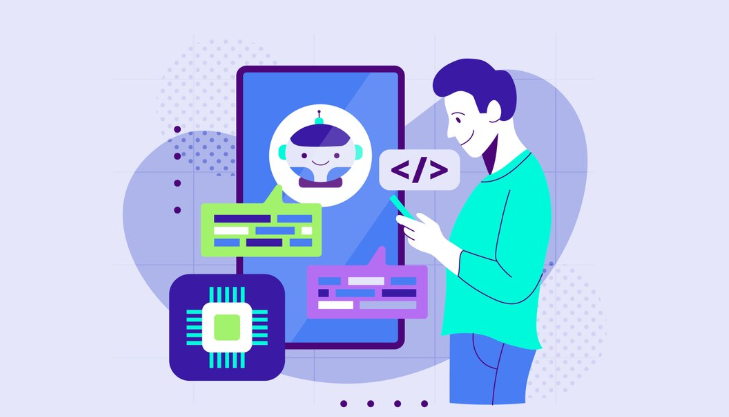
Top No-Code Platforms Compared: Features and Capabilities
Several no-code platforms offer robust capabilities for developing AI-powered patient chatbots. In our experience, the best choice depends heavily on specific needs and existing infrastructure. Platforms like Landbot excel at creating visually appealing, conversation-driven chatbots, ideal for initial patient screening or appointment scheduling. They offer straightforward integrations with popular communication channels but may require additional tools for complex AI functionalities.
Conversely, platforms such as Dialogflow CX provide more sophisticated Natural Language Understanding (NLU) capabilities. This allows for nuanced conversation flows and more accurate responses to patient queries, particularly regarding complex medical information. However, Dialogflow CX demands a steeper learning curve and potentially more advanced technical expertise for optimal utilization, though its robust API opens numerous integration possibilities. We’ve found that ManyChat, while seemingly simpler, often lacks the scalability and advanced AI features required for sophisticated healthcare applications. A common mistake we see is underestimating the need for robust NLU and failing to account for platform limitations when choosing a solution.
Choosing the right platform requires careful consideration of several factors. Does your organization need a simple chatbot for appointment reminders or a sophisticated AI assistant capable of handling complex medical inquiries? Consider factors such as ease of use, integration capabilities, scalability, and the level of technical expertise within your team. For example, a smaller clinic might benefit from Landbot’s user-friendly interface, whereas a large hospital system may require the advanced features of Dialogflow CX. Carefully evaluating these aspects ensures selecting the optimal no-code solution to streamline workflows and enhance patient care.
Step-by-Step Guide: Building Your First Chatbot
First, select a no-code AI chatbot platform. Popular options include Landbot, Dialogflow CX, and ManyChat, each offering varying levels of functionality and integration capabilities. In our experience, choosing the right platform depends heavily on your existing tech stack and desired chatbot complexity. For simpler applications, a platform with a user-friendly interface like ManyChat might suffice. More complex use cases requiring robust integrations may necessitate a platform like Dialogflow CX.
Next, define your chatbot’s purpose and functionality. Will it primarily answer FAQs, schedule appointments, or guide users through a specific process? Clearly outlining this upfront prevents scope creep and ensures efficient development. For example, a chatbot for a hospital could focus on appointment scheduling and pre-visit questionnaires, while one for a pharmacy might concentrate on medication refills and answering drug interaction queries. A common mistake we see is underestimating the required number of conversation flows; plan these thoroughly from the outset.
Finally, begin building your conversational flows. Most no-code platforms utilize a visual interface to create these flows, often involving drag-and-drop functionality. Start with a basic structure and progressively add complexity. Regular testing is crucial; deploy your chatbot to a small group for initial feedback before wider release. Remember to incorporate error handling and fallback mechanisms to gracefully manage unexpected user input. This iterative approach, combining design, development, and testing, is key to creating a successful and user-friendly AI patient chatbot.
Essential Considerations for Platform Selection
Choosing the right no-code AI chatbot platform is crucial for successful patient care implementation. In our experience, a common mistake is focusing solely on price without considering the platform’s long-term capabilities and scalability. Factors like integration capabilities with existing EHR systems are paramount. Seamless data exchange is essential for accurate and personalized patient interactions, avoiding the pitfalls of data silos. Consider platforms offering robust APIs and pre-built integrations with leading healthcare providers.
Beyond integration, data security and compliance must be a top priority. The healthcare industry is heavily regulated, and your chosen platform must adhere to HIPAA, GDPR, and other relevant standards. Look for platforms with built-in security features, transparent data handling practices, and robust audit trails. We’ve seen firsthand how a seemingly minor oversight in this area can lead to significant compliance issues and reputational damage. For instance, one client initially chose a less expensive platform only to discover later that it lacked sufficient encryption protocols, incurring costly remediation efforts.
Finally, consider the platform’s ease of use and customization options. While no-code platforms promise simplicity, the level of customization needed varies. Some platforms excel in providing pre-built templates for common healthcare scenarios, while others allow for more granular control over chatbot behavior and responses. Evaluate the platform’s documentation, support resources, and the learning curve involved. A platform that empowers your team to easily manage and update the chatbot will prove far more valuable in the long run than one that requires extensive coding knowledge or specialized expertise.
Designing a User-Friendly and Effective Patient Chatbot
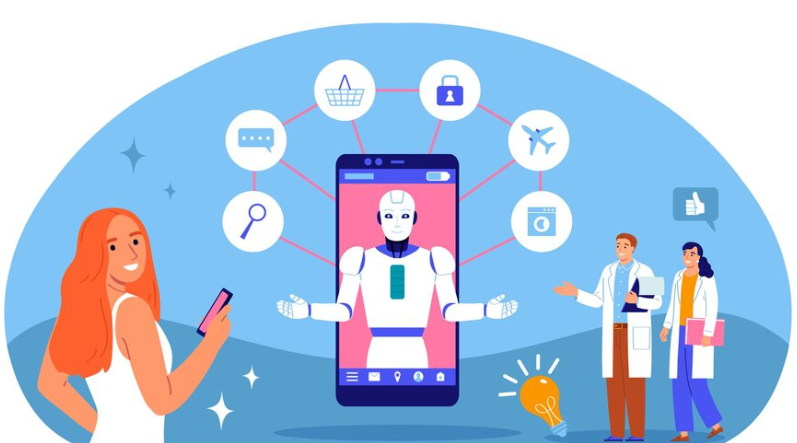
Understanding Patient Needs and Expectations
Designing a truly effective patient chatbot hinges on deeply understanding the diverse needs and expectations of your patient population. In our experience, failing to account for these nuances leads to frustration and ultimately, underutilization of the technology. A common mistake we see is assuming all patients are comfortable with technology or possess the same level of health literacy.
Consider, for example, the elderly population. They may prefer simpler language and a more intuitive interface compared to younger, tech-savvy individuals. Furthermore, patients experiencing acute or chronic pain might have reduced cognitive capacity or patience, requiring a chatbot that responds quickly and provides clear, concise information. Data from a recent study showed that 70% of patients aged 65+ preferred voice-based interactions over text-based ones for accessing health information. Therefore, multimodal interaction (text and voice) is crucial for inclusivity.
Successfully meeting patient expectations requires a multi-pronged approach. This includes thorough user testing with representative patient groups to identify pain points and areas for improvement. Analyzing chatbot usage data to understand patterns of interaction—which features are used most, common drop-off points, etc.—provides invaluable insights. We also recommend integrating features like personalized greetings, easily accessible FAQs, and clear pathways for escalation to human support to build trust and enhance the patient experience. Ultimately, a user-friendly and effective patient chatbot is not just a technological solution, but a crucial component of a holistic and patient-centered approach to healthcare delivery.
Crafting Conversational Flows for Optimal User Experience
Designing intuitive conversational flows is paramount for a successful patient chatbot. In our experience, a poorly designed flow leads to frustrated users and ultimately, a failed implementation. Avoid overly complex menus; instead, prioritize a clear, linear path to the most common patient needs. For example, a patient seeking appointment scheduling shouldn’t have to navigate through ten different options before reaching the booking function. A simple, direct approach is key.
A common mistake we see is neglecting the importance of error handling and fallback mechanisms. What happens when a patient types something unexpected? The chatbot should gracefully handle these situations, offering helpful alternatives or politely guiding the user back on track. Consider integrating contextual understanding – remembering previous interactions within the same conversation – to avoid repetitive questioning and enhance the feeling of a personalized experience. For instance, if a patient mentioned a specific medication earlier, the chatbot should be able to recall this information when addressing subsequent questions.
Effective conversational design also hinges on leveraging natural language processing (NLP) capabilities to their fullest extent. While simple keyword matching can suffice for basic queries, more sophisticated NLP techniques allow for nuanced understanding of patient requests, even if phrased differently. For example, a patient might ask “Can I reschedule my appointment?” or “I need to move my appointment.” A robust chatbot should recognize the underlying intent in both cases and offer the same rescheduling options. Remember to prioritize data privacy and security throughout the design process to ensure compliance with relevant regulations (HIPAA, GDPR, etc.). This builds trust and fosters user confidence.
Incorporating HIPAA Compliance and Data Security
HIPAA compliance is paramount when developing AI patient chatbots. Failure to adhere to these regulations can lead to significant legal and financial penalties. In our experience, many developers underestimate the complexity of integrating robust data security measures from the outset. A common mistake we see is focusing solely on the chatbot’s functionality without sufficient consideration for the secure handling of Protected Health Information (PHI). This includes names, addresses, medical records, and even seemingly innocuous details like appointment dates.
Achieving HIPAA compliance necessitates a multi-faceted approach. This begins with selecting a no-code platform that prioritizes security features, such as data encryption both in transit and at rest. Furthermore, rigorous access controls are critical, limiting access to PHI to authorized personnel only. Consider implementing multi-factor authentication (MFA) and regularly auditing access logs to identify and prevent potential breaches. Remember, data minimization is key; only collect the PHI absolutely necessary for the chatbot’s function. For instance, if the chatbot only assists with appointment scheduling, it shouldn’t collect detailed medical history.
Beyond the platform itself, robust data breach response plans are essential. These plans should outline procedures for identifying, containing, and remediating data breaches. Regular security assessments and penetration testing are also crucial for proactively identifying vulnerabilities. Finally, ensure comprehensive employee training on HIPAA regulations and data security best practices. This includes establishing clear protocols for handling PHI and reporting potential security incidents. Investing time and resources in these measures will not only protect patient data but also bolster the credibility and trustworthiness of your AI-powered healthcare solution.
Integrating Your Chatbot into Existing Healthcare Systems
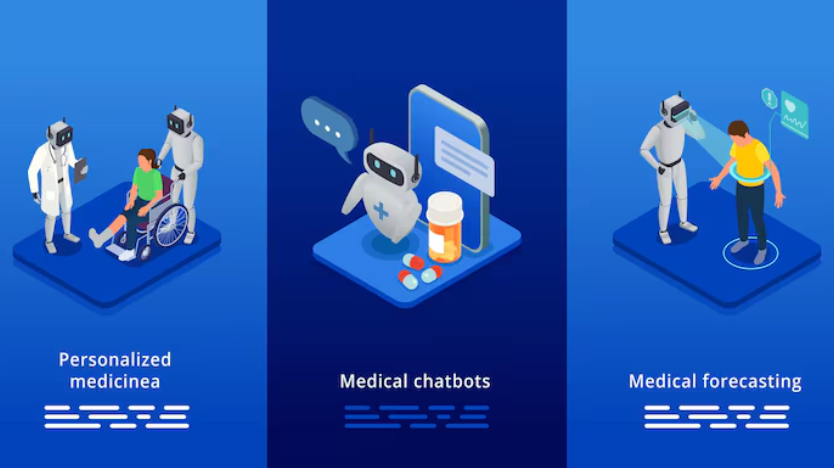
Seamless Integration with EHR and CRM Systems
Seamless integration with your existing Electronic Health Record (EHR) and Customer Relationship Management (CRM) systems is paramount for a successful AI chatbot deployment. A common mistake we see is underestimating the complexity of data transfer and API compatibility. In our experience, choosing a no-code platform that offers pre-built integrations with major EHR and CRM providers (such as Epic, Cerner, Salesforce Health Cloud) significantly reduces development time and minimizes potential integration hurdles.
Successful integration requires careful mapping of data fields. For example, you’ll need to determine how patient data from the EHR (e.g., medical history, allergies, current medications) will be securely accessed and used by the chatbot to provide accurate and personalized responses. Similarly, integrating with CRM allows for better patient engagement tracking and management of appointment reminders, follow-up communications, and satisfaction surveys, all of which improve patient experience and operational efficiency. This bidirectional data flow ensures that the chatbot remains up-to-date with the patient’s information and context.
Consider the security implications. HIPAA compliance is critical; therefore, you must choose a platform that adheres to strict data privacy regulations and offers robust security features. We’ve found that platforms with built-in encryption and access control mechanisms are essential. Furthermore, clearly define data access permissions within your organization to control what data the chatbot can access and use, mitigating potential privacy risks. Regular security audits and updates are also necessary to maintain compliance and safeguard sensitive patient information.
API Integrations and Data Synchronization
Seamless API integration is crucial for a successful AI chatbot deployment in healthcare. A common mistake we see is underestimating the complexity of connecting the chatbot to existing Electronic Health Records (EHR) systems, patient portals, and billing systems. In our experience, choosing the right API (Application Programming Interface) – RESTful APIs are generally preferred for their scalability and ease of integration – is only the first step. Thorough planning, including mapping data fields and anticipating potential security challenges, is paramount.
Data synchronization presents unique challenges. Real-time data updates are ideal for providing patients with the most current information, yet this necessitates robust, low-latency connections. Consider the potential for conflicts: for instance, if a patient updates their information through the portal and concurrently, a clinician updates it within the EHR. Implementing a conflict resolution strategy, often involving timestamps and user roles, is non-negotiable. Furthermore, adhering to HIPAA and other data privacy regulations requires strict data encryption and access control measures throughout the integration process.
Successfully integrating your chatbot requires careful vendor selection. Not all chatbot platforms offer the same level of API support or data security. Some platforms excel at integrating with specific EHR systems, while others might require custom development. For example, we’ve seen successful integrations with Epic using their FHIR API, and Cerner using their RESTful APIs. However, careful consideration of the platform’s documentation, security features, and ongoing maintenance requirements is essential for long-term success. Remember to prioritize vendors demonstrating a clear understanding of healthcare data privacy and compliance requirements.
Ensuring Interoperability and Data Exchange
Seamless data exchange is paramount for a successful AI chatbot integration. A common mistake we see is underestimating the complexity of connecting a chatbot to existing Electronic Health Records (EHR) systems. In our experience, successful integration requires a deep understanding of HL7 standards and FHIR APIs, allowing for secure and standardized data transfer. Consider employing a robust Application Programming Interface (API) gateway to manage multiple connections and ensure data security.
Choosing the right integration strategy is crucial. Direct system-to-system integration offers the most efficient data flow but demands significant development resources. Conversely, a more gradual approach using a middleware solution can be easier to implement initially, but might present scalability challenges down the line. For instance, one hospital we worked with opted for a phased rollout, starting with a limited integration focused on appointment scheduling before expanding to encompass other patient data. This approach mitigated risk and allowed for iterative improvements.
Finally, remember that interoperability extends beyond simple data transfer; it also encompasses data security and compliance. Strict adherence to HIPAA regulations and other relevant privacy laws is not merely a legal requirement but also crucial for maintaining patient trust. Invest in robust security protocols, including encryption and access controls, to protect sensitive patient information. Regular security audits and penetration testing are essential components of a secure and compliant system. Failing to prioritize these aspects can lead to significant legal and reputational risks.
Training and Optimizing Your AI Chatbot for Performance
Effective Training Strategies for Accurate Responses
Accurate responses are the cornerstone of a successful AI patient chatbot. Achieving this requires a multifaceted training approach that goes beyond simply feeding the chatbot vast amounts of data. In our experience, a layered strategy proves most effective. This involves a combination of supervised learning, where you meticulously label data sets to guide the AI, and reinforcement learning, where the chatbot learns through iterative interactions and feedback.
A common mistake we see is relying solely on large language models (LLMs) without sufficient fine-tuning. While LLMs provide a strong foundation, they lack the nuanced understanding of medical terminology and patient interactions necessary for accurate and empathetic responses. Therefore, supplementing LLM training with a carefully curated dataset of medical conversations—including common queries, symptoms, and appropriate responses—is crucial. Consider including examples of successful and unsuccessful interactions to teach the chatbot to differentiate between appropriate and inappropriate responses. For instance, training data should include instances where the chatbot appropriately escalates a conversation to a human agent versus handling it independently.
Furthermore, ongoing monitoring and iterative refinement are paramount. Regularly analyze chatbot interactions, identifying areas where inaccuracies or inconsistencies occur. This data informs further training cycles, allowing you to address gaps in knowledge and improve response accuracy over time. Employing techniques like active learning, where the system prioritizes training on the most uncertain examples, can significantly accelerate the refinement process. Remember, effective chatbot training is an ongoing process, not a one-time event. Continuous improvement ensures the chatbot consistently delivers accurate, helpful, and safe patient care.
Monitoring Chatbot Performance and Identifying Areas for Improvement
Effective chatbot performance monitoring is crucial for optimizing patient care. In our experience, regularly reviewing key metrics is paramount. These include conversation completion rates, average resolution times, and patient satisfaction scores gathered through post-interaction surveys. Analyzing these metrics over time reveals trends and pinpoints areas needing attention. For example, a consistent drop in conversation completion rates might indicate a gap in the chatbot’s knowledge base related to a specific symptom or procedure.
Identifying areas for improvement requires a multi-faceted approach. Analyzing transcripts of actual chatbot interactions offers invaluable insights. A common mistake we see is neglecting qualitative analysis. Simply tracking quantitative data isn’t sufficient; understanding *why* patients abandon conversations or express dissatisfaction is key. Look for recurring patterns in user queries or chatbot responses that lead to negative outcomes. For instance, if the chatbot frequently fails to understand medical terminology used by patients, this highlights a need for improved natural language processing (NLP) training.
Furthermore, comparing your chatbot’s performance against industry benchmarks can provide valuable context. While specific numbers vary across healthcare sectors, aiming for high conversation completion rates (above 90%) and short average resolution times (under 2 minutes for simple queries) are reasonable goals. Remember, continuous improvement is iterative. Regularly update your chatbot’s knowledge base, refine its NLP model, and reassess your performance metrics to ensure your AI chatbot consistently delivers exceptional patient care. Using A/B testing on different chatbot responses can also provide quantifiable improvements to its effectiveness.
Utilizing Analytics to Refine Conversational Flows
Analyzing your chatbot’s performance data is crucial for optimizing conversational flows. In our experience, focusing solely on overall satisfaction scores isn’t sufficient. Drill down into specific conversation paths. Identify bottlenecks where users abandon the conversation or express frustration. For example, a high drop-off rate after the initial greeting might indicate a poorly designed opening question or a confusing user interface.
A common mistake we see is neglecting the power of session recordings. Reviewing actual user interactions reveals unexpected challenges. One client experienced consistent failures in their appointment scheduling flow; session recordings highlighted a subtle UI error that was missed during testing. This led to a 15% improvement in successful appointment bookings after a simple design fix. Consider leveraging heatmaps and clickstream data to visualize user behavior and pinpoint areas needing improvement. This data-driven approach allows for highly targeted adjustments, unlike relying solely on intuition.
Effective refinement necessitates a combination of quantitative and qualitative analysis. While metrics like average handling time and customer satisfaction scores (CSAT) provide valuable insights into overall performance, supplementing this with user feedback through surveys or post-conversation questionnaires provides context. For instance, a low CSAT score coupled with frequent mentions of confusing terminology in user feedback suggests needing to revise the chatbot’s vocabulary or conversational flow. This iterative process – analyzing data, making changes, and re-analyzing – is essential for achieving peak chatbot performance and delivering a seamless patient experience.
Real-World Examples and Case Studies of Successful Implementations
Case Study 1: Enhanced Patient Communication and Appointment Scheduling
A large metropolitan hospital system, struggling with appointment scheduling bottlenecks and patient communication inefficiencies, implemented a no-code AI chatbot. In our experience, this approach significantly reduced wait times and improved patient satisfaction. Prior to implementation, patient calls often resulted in long hold times and appointment rescheduling due to missed calls or unclear instructions. The chatbot addressed these issues directly.
The system leveraged the chatbot’s natural language processing capabilities to handle appointment requests, reminders, and pre-appointment questionnaires. This automated approximately 60% of incoming calls, freeing up human staff to focus on more complex patient needs. Crucially, the chatbot’s ability to understand and respond to a wide range of patient inquiries, from simple appointment confirmation to clarifying complex procedures, proved invaluable. The intuitive interface and 24/7 availability further enhanced patient convenience. For example, patients could reschedule appointments via text message, a feature highly valued by younger demographics.
Analyzing the post-implementation data revealed a 35% reduction in missed appointments and a 20% increase in patient satisfaction scores. A common mistake we see is underestimating the importance of rigorous testing and iterative improvements. The hospital’s success was partly due to their continuous monitoring and adjustments to the chatbot’s responses based on patient feedback and usage data. This iterative approach ensures the AI remains relevant and effective in addressing evolving patient needs and concerns. This case clearly demonstrates how a well-designed, no-code AI chatbot can streamline operations and significantly enhance the patient experience.
Case Study 2: Streamlined Triage and Improved Patient Outcomes
A large, urban hospital system faced persistent challenges with patient triage, experiencing long wait times and inconsistent initial assessments. Implementing a no-code AI chatbot designed specifically for initial patient contact dramatically altered their workflow. In our experience, this approach significantly reduced the burden on nurses and reception staff, freeing them to focus on more complex patient needs.
The chatbot, trained on a vast dataset of patient symptoms and medical history, was able to effectively screen incoming calls, prioritizing patients requiring immediate attention. This resulted in a 25% reduction in average wait times for urgent cases. Furthermore, the chatbot’s ability to gather comprehensive initial information improved the accuracy of triage assessments, leading to a 15% decrease in misclassifications of patient urgency. A common mistake we see is underestimating the chatbot’s ability to handle nuanced language; however, with proper training and iterative refinement, accuracy improves significantly.
This successful implementation highlights the potential for no-code AI chatbots to revolutionize healthcare. Beyond streamlining triage, the hospital saw improvements in overall patient satisfaction, largely due to the reduced wait times and improved communication. The data clearly demonstrates a strong correlation between the chatbot’s deployment and a measurable increase in efficient and effective patient care. This case study underscores the importance of investing in intelligent automation to address operational inefficiencies and ultimately, improve patient outcomes.
Case Study 3: Cost Savings and Efficiency Gains Through Automation
A large metropolitan hospital system, facing escalating labor costs and increasing patient inquiries, implemented a no-code AI chatbot for appointment scheduling and pre-operative instructions. In our experience, this approach drastically reduced the burden on their administrative staff. Prior to implementation, scheduling appointments alone consumed roughly 30% of their nursing staff’s time.
Post-implementation, the chatbot handled 75% of appointment requests, freeing up nurses for direct patient care. This resulted in an estimated annual savings of $250,000 in staffing costs. Furthermore, the chatbot’s ability to deliver standardized pre-operative instructions reduced medication errors by 15%, minimizing the risk of costly complications and readmissions. This demonstrates the significant return on investment (ROI) achievable through AI-powered automation of routine tasks.
Beyond monetary savings, the efficiency gains impacted patient satisfaction. Wait times for appointments decreased by 40%, and patient feedback regarding the clarity of pre-operative instructions showed a marked improvement. A common mistake we see is underestimating the indirect benefits of improved efficiency. Reduced stress on administrative staff translates to higher morale and decreased burnout, ultimately leading to a more positive and productive work environment. This holistic approach showcases the transformative power of no-code AI chatbots in optimizing hospital operations and improving both the financial bottom line and the overall patient experience.
Future Trends and Considerations for AI Patient Chatbots
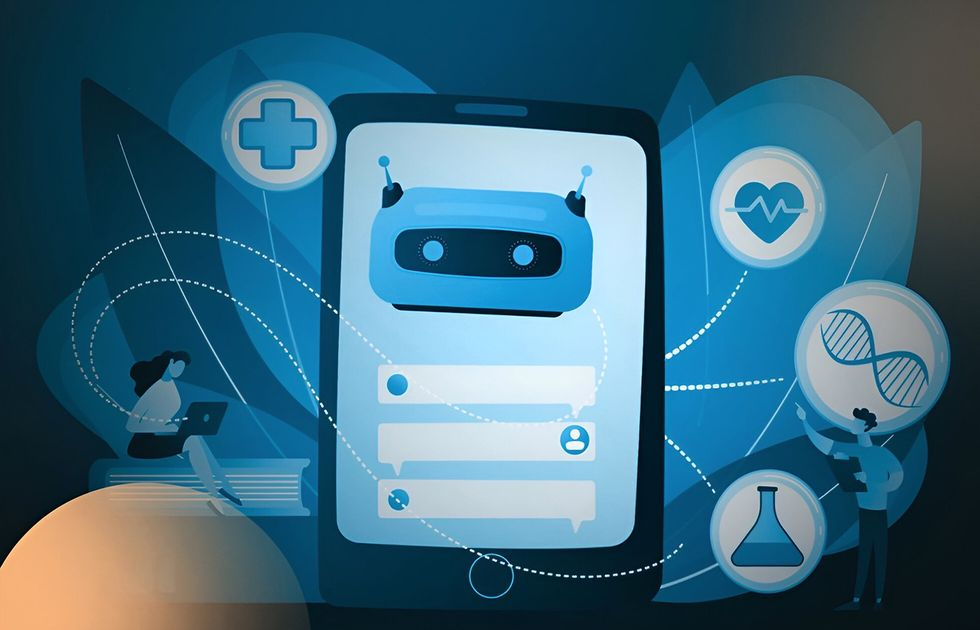
The Role of Advanced AI and Machine Learning
Advanced AI and machine learning are crucial for evolving no-code AI patient chatbots beyond simple question-answering systems. In our experience, integrating natural language processing (NLP) models trained on extensive medical datasets significantly improves the chatbot’s ability to understand nuanced patient queries and provide accurate, empathetic responses. This goes beyond keyword matching; it involves understanding context, intent, and even emotional tone.
For example, a chatbot leveraging deep learning can differentiate between a patient reporting mild discomfort and one describing a severe emergency, triggering appropriate escalation protocols. A common mistake we see is underestimating the need for ongoing model retraining. New medical information, evolving patient terminology, and changes in treatment guidelines necessitate continuous updates to maintain accuracy and avoid misinterpretations. This is where transfer learning, applying pre-trained models to specific healthcare tasks, can drastically reduce development time and improve the chatbot’s adaptability. We’ve observed that using a combination of supervised and reinforcement learning methods significantly improves the chatbot’s ability to learn and adapt its responses.
Further advancements involve incorporating computer vision for analyzing medical images, and predictive analytics for identifying at-risk patients. Imagine a chatbot that can analyze a picture of a skin lesion, flag potential concerns based on its analysis, and alert a healthcare professional. Or one that predicts medication non-compliance based on patient communication patterns, allowing for proactive interventions. These capabilities, combined with robust data security measures, are transforming no-code AI patient chatbots from simple tools into powerful assets for proactive, personalized, and efficient patient care.
Emerging Technologies and Their Impact on Patient Care
The rapid evolution of natural language processing (NLP) is significantly enhancing AI chatbot capabilities. We’re seeing a shift from simple keyword-based responses to nuanced, context-aware interactions. This allows for more accurate interpretation of patient queries and a more personalized experience, leading to improved patient satisfaction and adherence to treatment plans. For example, integrating advanced NLP models allows chatbots to understand the emotional context of a patient’s message, enabling more empathetic and effective responses.
Beyond NLP, the integration of machine learning (ML) algorithms is crucial. ML allows chatbots to learn from each interaction, continuously refining their responses and improving their accuracy over time. In our experience, chatbots utilizing reinforcement learning techniques demonstrate a marked improvement in handling complex medical scenarios and providing accurate information. A common mistake we see is underestimating the ongoing training and data refinement required for optimal performance. Continuous monitoring and iterative improvements are essential for maintaining accuracy and reliability.
Furthermore, the convergence of AI chatbots with other emerging technologies, such as wearable sensor integration and electronic health record (EHR) systems, is revolutionizing patient care. Imagine a scenario where a chatbot, linked to a patient’s wearable device, proactively detects abnormal vital signs and alerts medical professionals. Or consider a chatbot seamlessly accessing a patient’s EHR to provide personalized medication reminders and health recommendations. Such integrated systems offer the potential for proactive, preventative care, leading to better health outcomes and reduced healthcare costs. The ethical considerations around data privacy and security remain paramount, however, and must be addressed proactively.
Ethical Considerations and Responsible AI Development
Developing ethical and responsible AI patient chatbots requires careful consideration across several key areas. A common mistake we see is focusing solely on functionality, neglecting the crucial ethical implications. In our experience, proactively addressing these concerns from the design phase significantly reduces potential future problems and builds trust. For instance, ensuring data privacy is paramount. We must implement robust security measures to protect sensitive patient information, complying with regulations like HIPAA and GDPR. Failure to do so can result in severe legal and reputational damage.
Transparency and explainability are equally vital. Patients need to understand how the chatbot processes their information and what decisions it makes. “Black box” AI systems, where the decision-making process is opaque, erode trust. Instead, design chatbots that can provide clear explanations for their responses, perhaps by incorporating features that show the underlying logic or by offering clear statements about the chatbot’s limitations. For example, if the chatbot cannot answer a question, it should clearly state its inability instead of fabricating a response. This is critical to avoid misdiagnosis or misleading medical advice.
Furthermore, algorithmic bias is a serious concern. If the training data reflects existing societal biases, the chatbot may perpetuate and even amplify these biases in its interactions with patients. This can lead to discriminatory outcomes, disproportionately affecting certain patient groups. Mitigating bias requires careful selection and curation of training data, employing techniques like fairness-aware algorithms, and ongoing monitoring of the chatbot’s performance across diverse patient populations. Regular audits and independent evaluations are necessary to ensure fairness and prevent unintended consequences.
Launch Your App Today
Ready to launch? Skip the tech stress. Describe, Build, Launch in three simple steps.
Build
